The plot_tox_stacks function creates a set of boxplots representing EAR
values computed with the get_chemical_summary function, and
dependent on the choice of several input options. See "Summarizing the data"
in the Introduction vignette: vignette("Introduction", package = "toxEval")
for a description on how the EAR values are computed, aggregated, and summarized.
Choosing "Chemical Class" in the category argument will generate separate stacked
bars for each unique class. "Chemical" will generate stacked bars for each individual
chemical, and "Biological" will generate stacked bars for each group in the selected
ToxCast annotation. The legend can optionally be turned on or off using the
include_legend argument. It may be impractical for instance to show the
legend for "Chemical" if there are hundreds of chemicals.
Usage
plot_tox_stacks(
chemical_summary,
chem_site,
category = "Biological",
mean_logic = FALSE,
sum_logic = TRUE,
manual_remove = NULL,
include_legend = TRUE,
font_size = NA,
title = NA,
y_label = NA,
top_num = NA
)Arguments
- chemical_summary
Data frame from
get_chemical_summary.- chem_site
Data frame with at least columns SiteID, site_grouping, and Short Name.
- category
Character. Either "Biological", "Chemical Class", or "Chemical".
- mean_logic
Logical.
TRUEdisplays the mean sample from each site,FALSEdisplays the maximum sample from each site.- sum_logic
Logical.
TRUEsums the EARs in a specified grouping,FALSEdoes not.FALSEmay be better for traditional benchmarks as opposed to ToxCast benchmarks.- manual_remove
Vector of categories to remove.
- include_legend
Logical. Used to include legend or not.
- font_size
Numeric value to adjust the axis font size.
- title
Character title for plot.
- y_label
Character for x label. Default is NA which produces an automatic label.
- top_num
Integer number to include in the graph. If NA, all data will be included.
Details
The graph displays a slightly different result for a single site. Providing data with only one site displays each individual sample as a stacked bar rather than the mean or maximum for a site.
This is a function where it may be ideal to create a custom order to the sites
(for example, west-to-east). See the above section "Custom configuration"
vignette("Introduction", package = "toxEval") for instructions on how to convert
the character vector sites to a factor with ordered levels.
Examples
# This is the example workflow:
path_to_tox <- system.file("extdata", package = "toxEval")
file_name <- "OWC_data_fromSup.xlsx"
full_path <- file.path(path_to_tox, file_name)
tox_list <- create_toxEval(full_path)
ACC <- get_ACC(tox_list$chem_info$CAS)
ACC <- remove_flags(ACC)
cleaned_ep <- clean_endPoint_info(end_point_info)
filtered_ep <- filter_groups(cleaned_ep)
chemical_summary <- get_chemical_summary(tox_list, ACC, filtered_ep)
plot_tox_stacks(chemical_summary, tox_list$chem_site,
"Biological", top_num = 5)
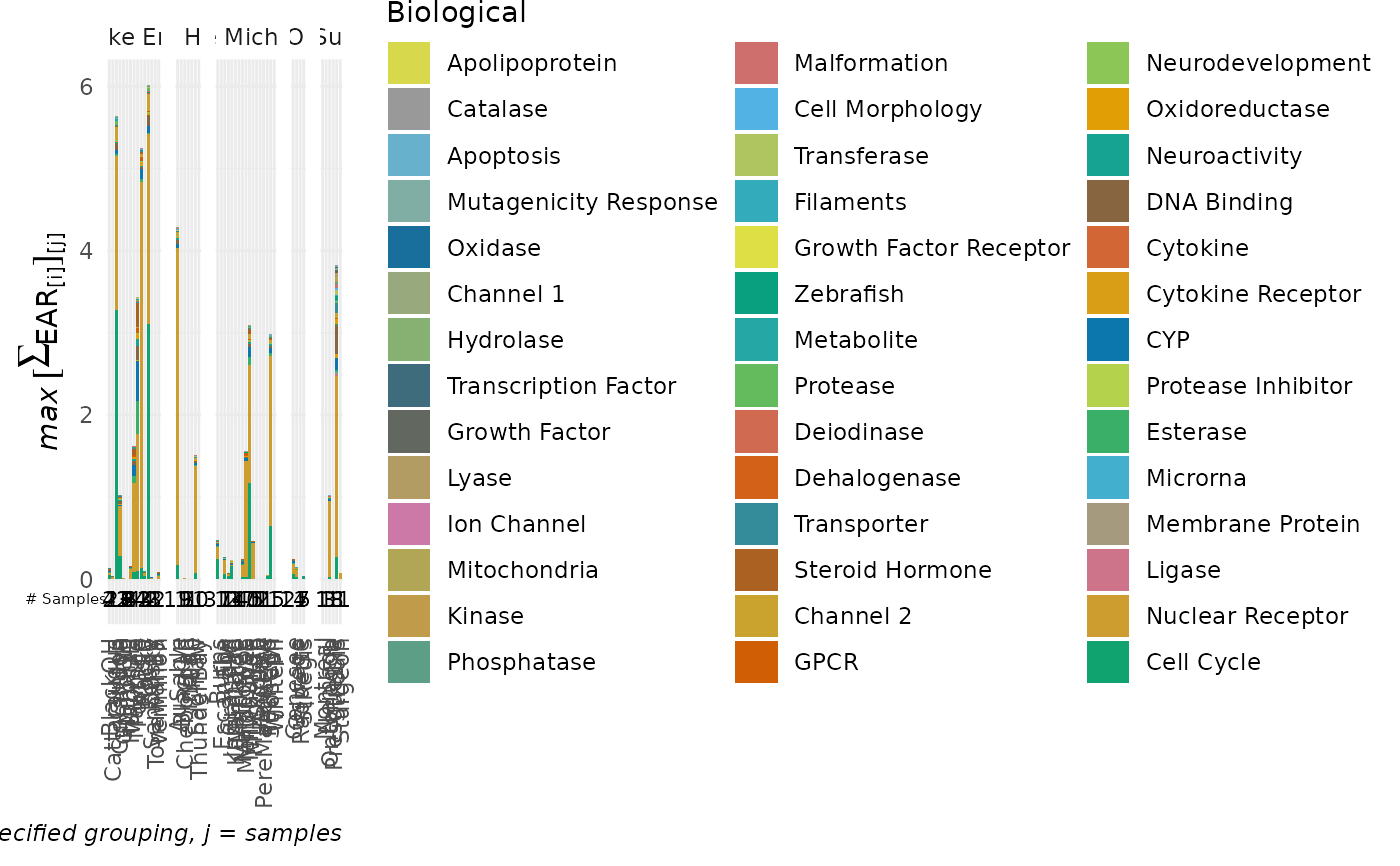 # \donttest{
plot_tox_stacks(chemical_summary, tox_list$chem_site, "Chemical Class")
# \donttest{
plot_tox_stacks(chemical_summary, tox_list$chem_site, "Chemical Class")
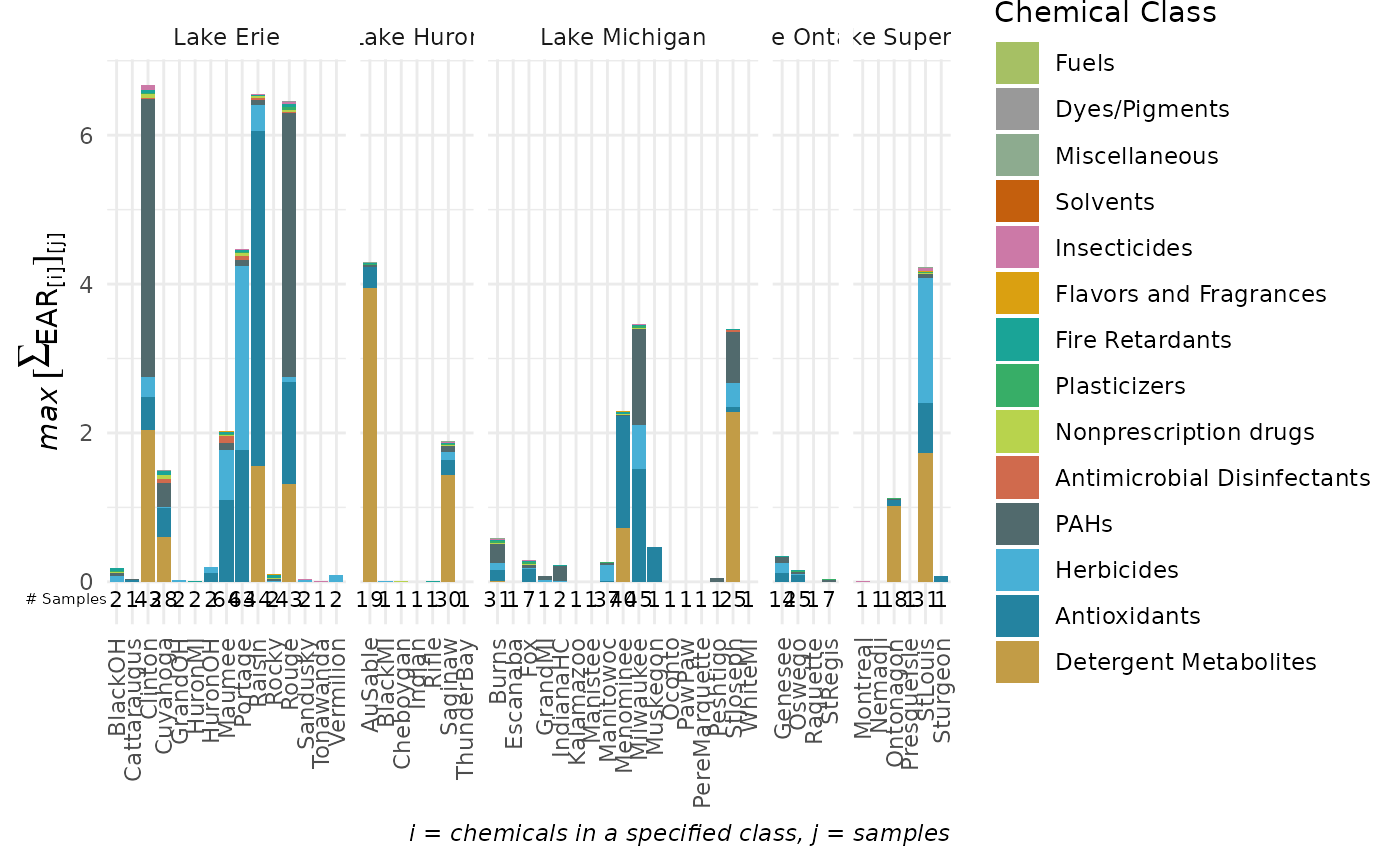 plot_tox_stacks(chemical_summary, tox_list$chem_site, "Chemical", include_legend = FALSE)
plot_tox_stacks(chemical_summary, tox_list$chem_site, "Chemical", include_legend = FALSE)
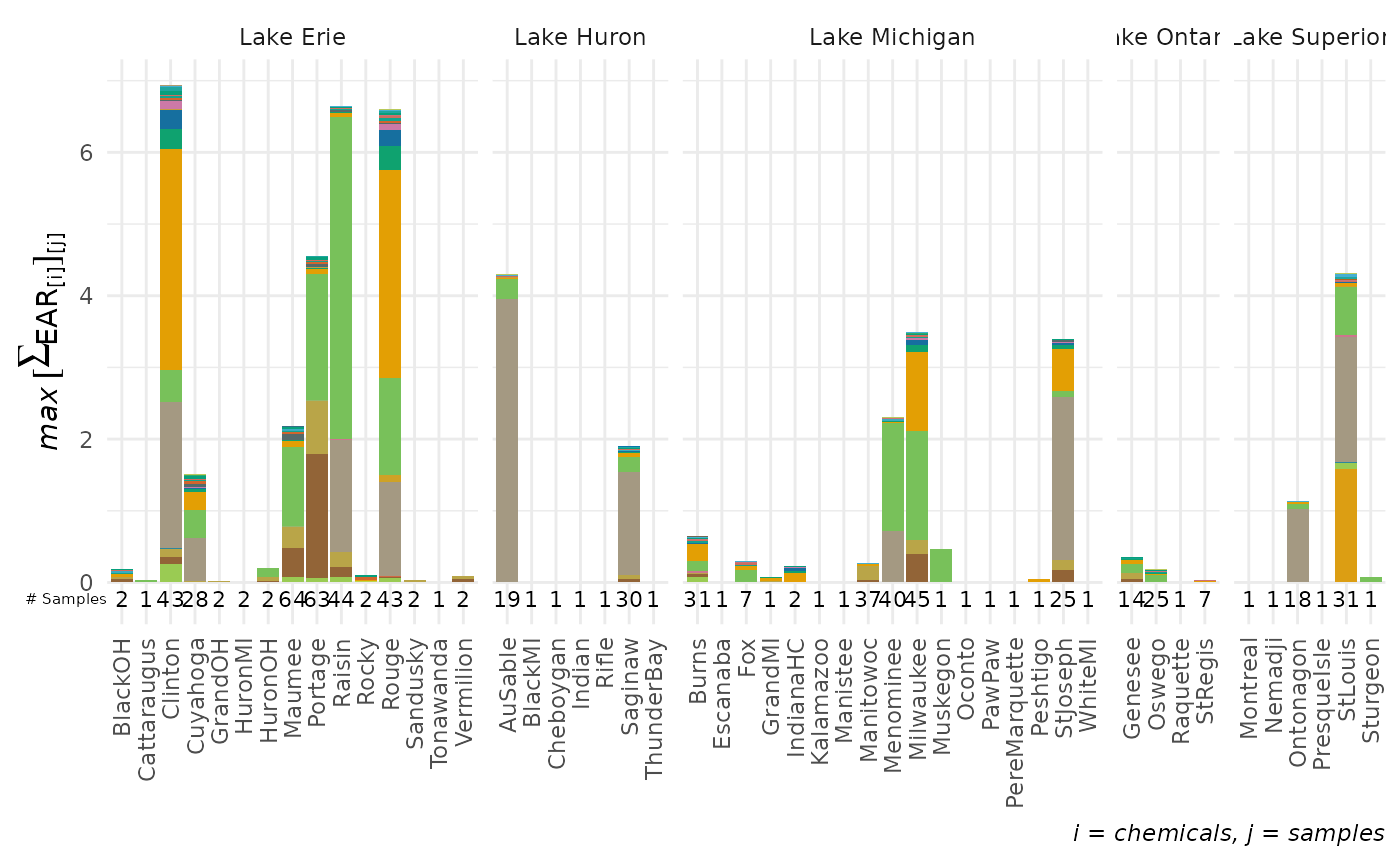 plot_tox_stacks(chemical_summary, tox_list$chem_site, "Chemical", top_num = 5, y_label = "EAR")
plot_tox_stacks(chemical_summary, tox_list$chem_site, "Chemical", top_num = 5, y_label = "EAR")
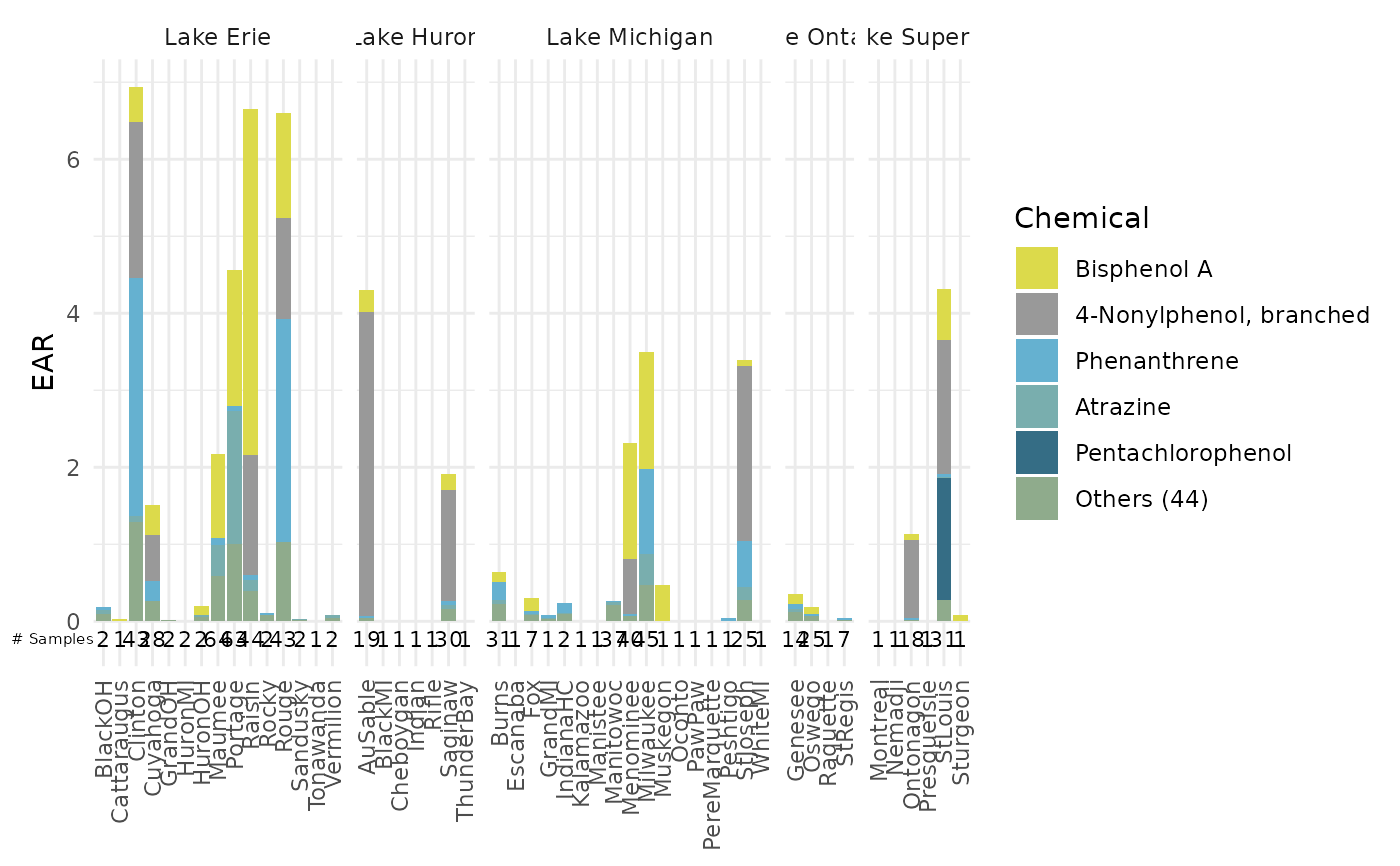 single_site <- dplyr::filter(chemical_summary, site == "USGS-04024000")
plot_tox_stacks(single_site, tox_list$chem_site, "Chemical", top_num = 5)
single_site <- dplyr::filter(chemical_summary, site == "USGS-04024000")
plot_tox_stacks(single_site, tox_list$chem_site, "Chemical", top_num = 5)
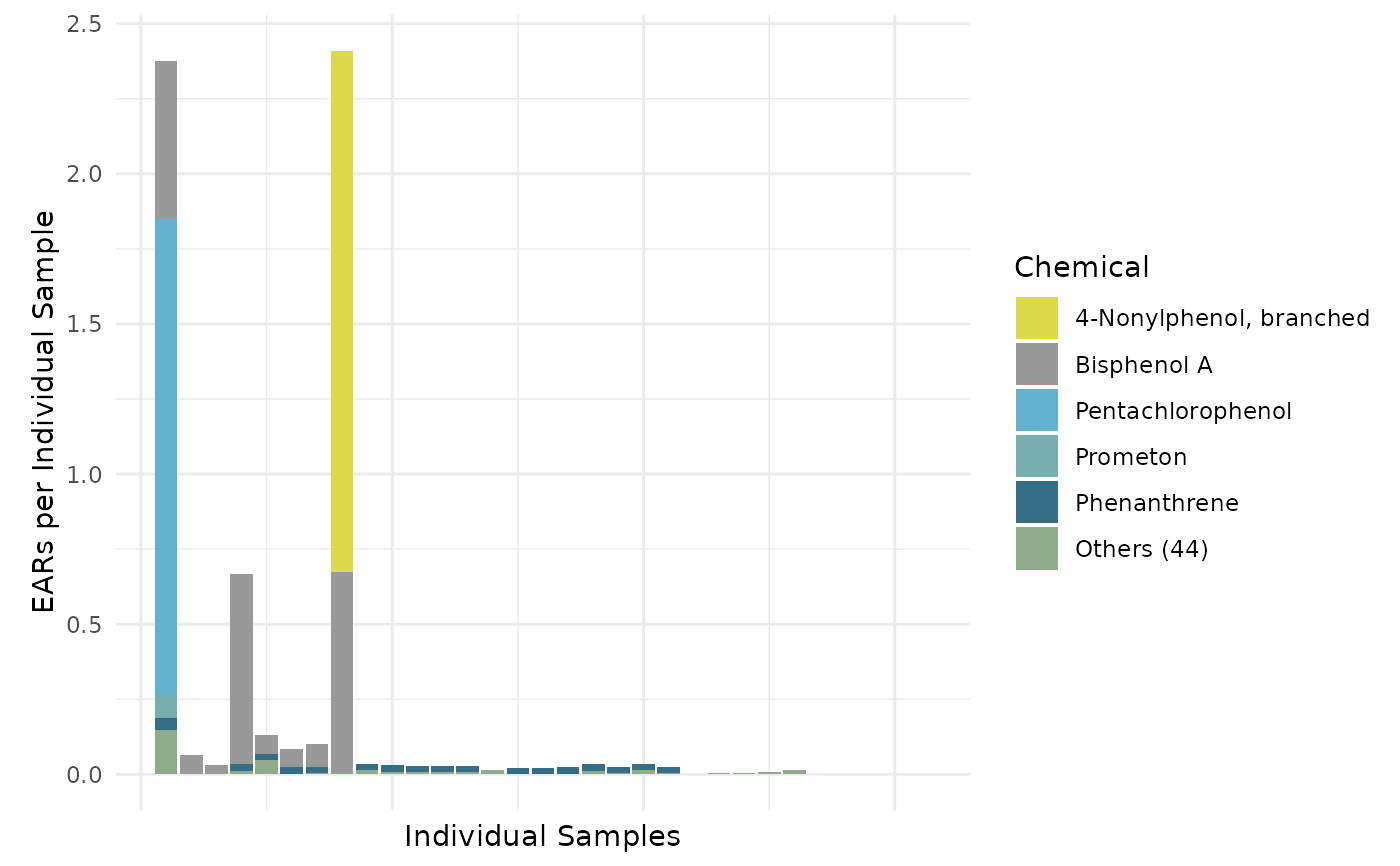 plot_tox_stacks(single_site,
chem_site = tox_list$chem_site,
category = "Chemical", top_num = 5, y_label = "EAR"
)
plot_tox_stacks(single_site,
chem_site = tox_list$chem_site,
category = "Chemical", top_num = 5, y_label = "EAR"
)
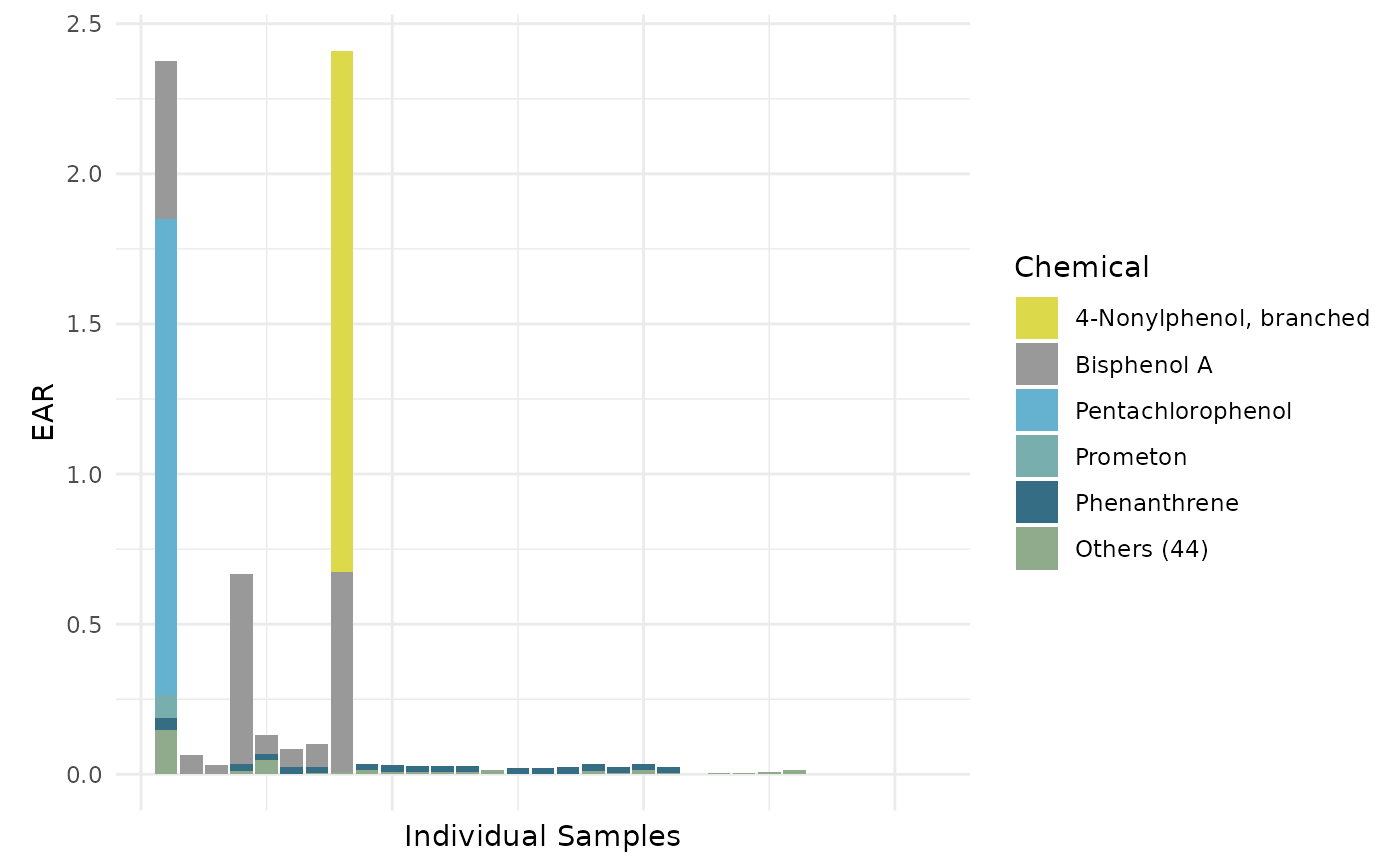 # }
# }
